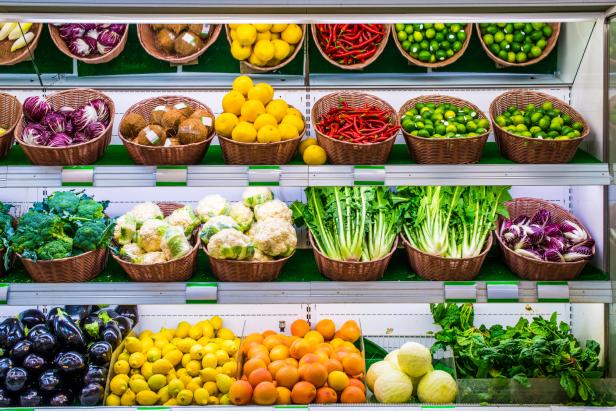Forget the Diet! Make These 7 Small Changes Instead

bowdenimages, Mark Bowden
Two of the most common New Year’s resolutions are to lose weight and get healthier. In order to achieve these goals, many folks jump on the fad diet bandwagon. But many of these diets require complete elimination of certain food groups, have you eating close to nothing or recommend a boatload of supplements that empty your wallet. Instead of looking for quick results that will probably not last long, make these small changes instead. Make these small changes for at least 6 months, and they can become lifelong healthy habits.
Plan Weeknight Meals
When it comes to the hustle and bustle of weeknight dinners, all bets for healthy can be off. Instead of getting stuck ordering in or heading to the nearest fast food joint, take a half hour on Saturday to plan out your weeknight meals. Create a shopping list of the ingredients needed and head to the market on Sunday.

Measure Ingredients
Large portions are one way folks overconsume calories. This is especially true with certain high calorie foods, including nuts, salad dressing, oil, peanut butter, granola, rice, pasta and juice. Although all these foods can be part of a healthy weight loss plan, eating controlled portions will help keep calories in check.

Eat At Least 2 Whole Grains per Day
The 2015 dietary guidelines for Americans recommend getting half your grain intake from whole grains. If you’re not used to eating any whole grains, start with two serving per day. For example, make your sandwich with 100% whole wheat bread, or swap your pasta from traditional white to whole wheat.

Iain Bagwell/Getty
Cook and Freeze for Later
Go a step further and cook double batches of weeknight favorites and freeze half for a super busy week. This way if you don’t have time to cook, you’ll always have something you can pull from the freezer. Dishes that are perfect to freeze include meatballs, lasagna, soups, chili, and stew.

Deyan Georgiev, Deyan Georgiev
Up Your Fruits and Veggies
Although this is a change you may think you’re making, the 2015 dietary guidelines found that up to 90% of Americans don’t eat their daily recommended amount of vegetables and fruits. Fruits and vegetables are relatively low in calories and provide vitamins, minerals, antioxidants, and phytonutrients (plant chemicals that help fight and prevent disease). Make it a point to eat at least one fruit or vegetable at every snack and at least one fruit and one vegetable at every meal. When you reach those goals, kick it up another notch.

Osipovfoto / ThinkStock
Up Your Milk, Cheese, and Yogurt
The dietary guidelines recommend 3 servings of dairy every day, but found that Americans are eating only 2. Milk contains 9 essential nutrients, including 3 that were flagged as nutrients that most Americans are lacking. These nutrients include potassium, vitamin D, and calcium. Taking in that last serving of dairy can help close the gap on nutrients you may be missing.

John Fedele, This content is subject to copyright.
Get Your Zzs
Lack of sleep has been associated with overeating. When you’re tired, rational decisions to choose healthy food are compromised. Make sure to get at least 7 hours of sleep each night.
Related Links:
Buy This, Not That: How to Make Better Choices at the Supermarket
Trouble Fitting Healthy Meals into Your Budget? — Start with These Tips
What to Do with Produce That's About to Go Bad
Why You Need Iron in Your Diet
Toby Amidor, MS, RD, CDN, is a registered dietitian and consultant who specializes in food safety and culinary nutrition. She is the author of The Greek Yogurt Kitchen: More Than 130 Delicious, Healthy Recipes for Every Meal of the Day.

































